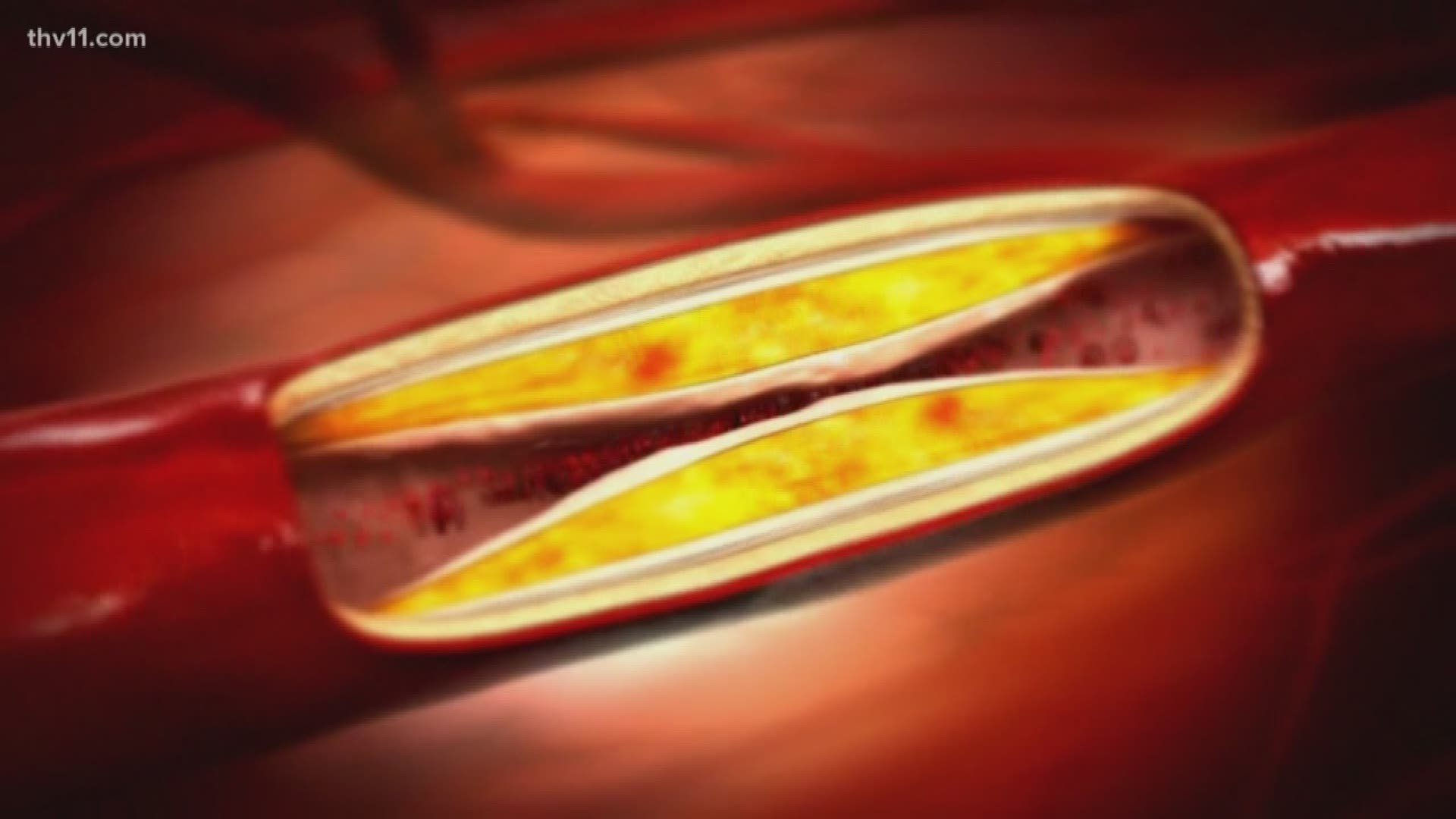LITTLE ROCK, Ark. —
Blockages on highways that take you to work or home can be irritating.
But when it comes to matters of the heart? According to Doctor Ghosheh, those types of blockages can happen in the branches that come off the aorta, which is the highway your blood takes to go to the organs.
Blockages of those highways are called Peripheral Artery Disease and can be deadly. It can lead to coronary artery disease, inducing strokes and heart attacks.
The bad news, Doctor Ghosheh says, is that it's one of the most common arthroscopic diseases there are. "It's actually more common than some cancers, even."
People over 65 are the most susceptible, along with diabetics over age 50, and smokers over age 50.
"Smoking increases your risk of Peripheral Artery Disease about four-fold," Dr. Ghosheh says.
And he is quick to point out how the disease has no symptoms until it has progressed. "Leg symptoms on exertion or even at rest at night. These can be telltale signs of early blockages in the legs."
Dr. Ghosheh also says that some of them will present with an unhealing ulcer on their toes or their feet.
It's why when you get checked, or put on the gown, get ready to take something off.
"Visit your primary care, take off your socks and shoes. Make sure your physician examine you to look for early signs of arterial periphery disease."
Dr. Ghosheh says there is good news: there are medications and treatments available. This condition is a clarion call to older adults to get it caught early.
You have the ability and facility to improve circulation. The heart highway, like an interstate, is so much more efficient when all is clear.
RELATED:

